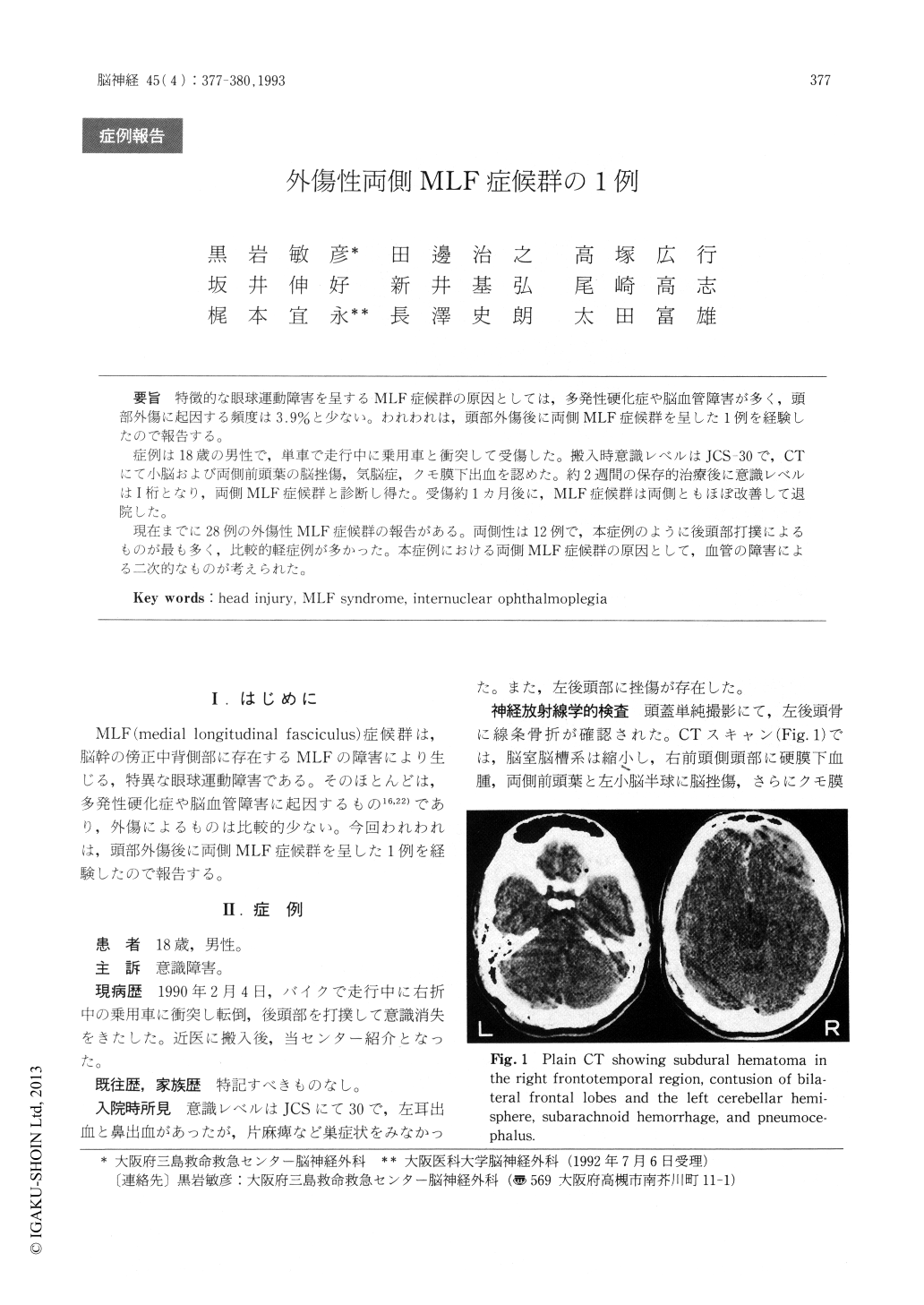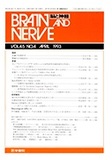Japanese
English
- 有料閲覧
- Abstract 文献概要
- 1ページ目 Look Inside
特徴的な眼球運動障害を呈するMLF症候群の原因としては,多発性硬化症や脳血管障害が多く,頭部外傷に起因する頻度は3.9%と少ない。われわれは,頭部外傷後に両側MLF症候群を呈した1例を経験したので報告する。
症例は18歳の男性で,単車で走行中に乗用車と衝突して受傷した。搬入時意識レベルはJCS−30で,CTにて小脳および両側前頭葉の脳挫傷,気脳症,クモ膜下出血を認めた。約2週間の保存的治療後に意識レベルは1桁となり,両側MLF症候群と診断し得た。受傷約1カ月後に,MLF症候群は両側ともほぼ改誇して退院した。
現在までに28例の外傷性MLF症候群の報告がある。両側性は12例で,本症例のように後頭部打撲によるものが最も多く,比較的軽症例が多かった。本症例における両側MLF症候群の原因として,血管の障害による二次的なものが考えられた。
A case of traumatic bilateral medial longitudinal fasciculus (MLF) syndrome is reported.
An 18-year-old man who had been struck on theoccipital region in a traffic accident was admitted toour center. on admission, the consciousness evaluated by the Japan Coma Scale was 30. Skull X-ray film revealed a linear skull fracture of the left occipital bone. CT scan showed subdural hematoma in the right frontotemporal region, contusion of bilateral frontal lobes and the left cerebellar hemi-sphere, subarachnoid hemorrhage, and pneumoce phalus. Two weeks after the injury, his consciousness improved and he was diagnosed as having bilateral MLF syndrome. Barbiturate, dehydration and ste-roid therapy were added to for intracranial hemo-rrhage. One month later, MLF syndrome improved and he was discharged without any neurological dificit.

Copyright © 1993, Igaku-Shoin Ltd. All rights reserved.


